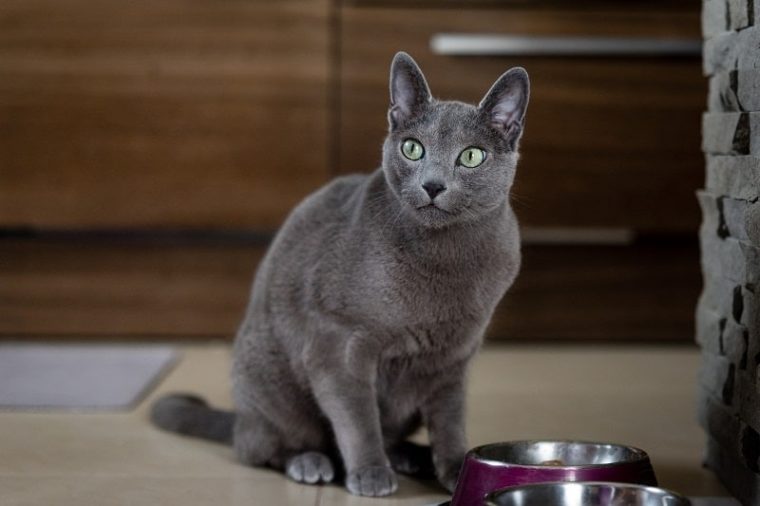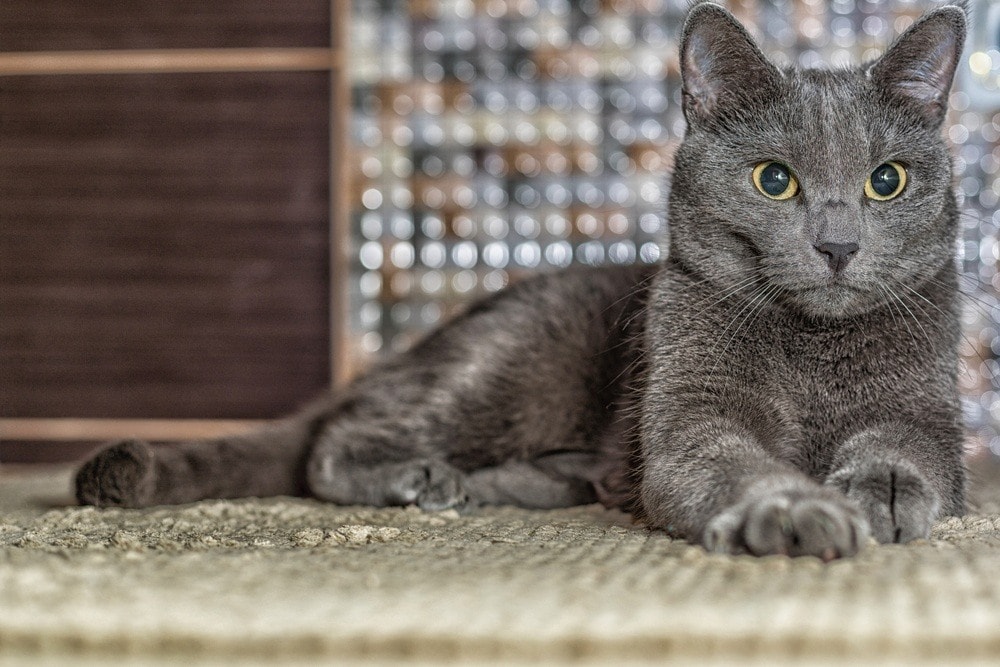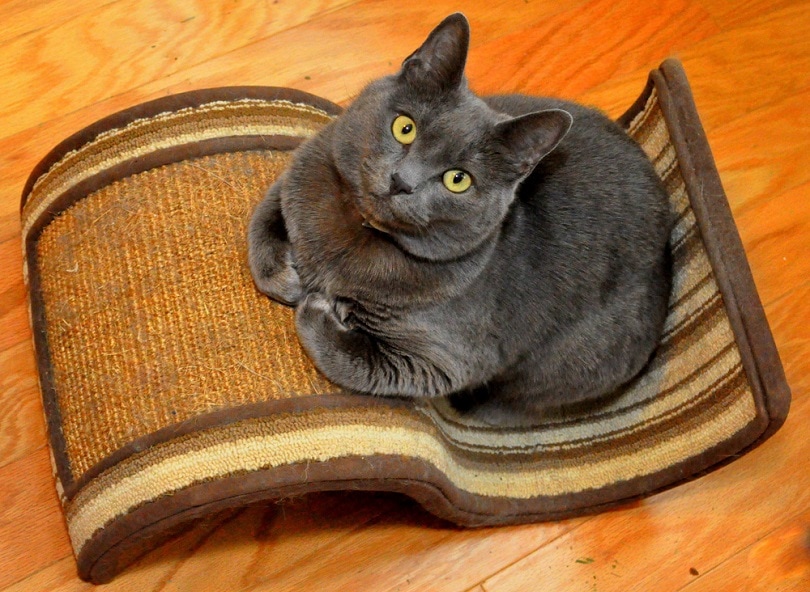
Russian Blues are a stunning and affectionate cat breed with a long and interesting history. It might not be surprising that the Russian Blue cat is thought to have originated in Russia. But their origins seem to be a little more complicated than that.
Keep reading to learn everything you’ve ever wanted to know about the history of Russian Blues.
Unclear Official Origins
Russian Blues are a naturally-occurring breed, which can make pinpointing its exact origin quite difficult. It is believed that this beautiful breed came to be in the port of Arkhangelsk, a regional center in the northwestern part of Russia. The long winters experienced in this region may be why Russian Blues developed their dense and plush coat. They needed something to keep them warm to survive the harsh weather.
Cats of this breed were said to be favored by royals and Russian czars.
Some believe sailors brought these cats from the Archangel Isles to Northern Europe in the 1860s. Others believe that the first Russian Blues lived in the Russian wilderness and were hunted for their pelts as their thick, dense, and uniquely colored fur would have been worth a lot of rubles.

The European Beginnings
While Russian Blues may have had Russian origins, it wasn’t until the breed came to Great Britain that it began to be officially developed.
The original Russian Blue was known as the Archangel Cat or Archangel Blue. It was first exhibited in 1875 at London’s Crystal Palace, competing against other similarly colored cats. While they didn’t take home any prizes at this cat show, they certainly left a big impression.
It wasn’t until 1912 that Russian Blues were given their own separate class for competition purposes after breeders in England and Scandinavia worked hard to develop the bloodline foundation for the modern Russian Blue.
Coming to America
Russian Blues began being imported to the United States in the early 1900s.
The breed appeared to be on the decline after the Second World War. Thanks to Russian Blue enthusiasts throughout Europe, however, the bloodline could be saved. Breeders throughout Sweden, Finland, and Denmark began crossbreeding Blues with Siamese cats. This resulted in a beautiful cat that was more angular and longer than traditional Russian Blues.
It wasn’t until after WWII that American breeders created the Russian Blue that we know and love today. They combined the bloodlines of the British and Scandinavian Russian Blues, which led to most of the Siamese traits being bred out.

Genetic Background & Recognition
Russian Blues have a distinctive and consistent look because the original breeders used only Russian Blues to create the breed. Two Russian Blue cats will always produce a genetic copy of themselves.
There is one slight exception to this rule, however. The “Pointed” Russian Blue comes from the coloring gene of the Siamese cat from the brief post-WWII outcross. A pointed kitten can be born if both of its parents are carriers of the Color Point Carrier (CPC) gene. If only one parent has the gene, it can be passed on to the next generation, but color-pointed kittens will not be born in that litter.
One interesting thing to note is that the blue coloring is not unique to Russian Blues as a breed. Blue is a naturally occurring color mutation in cats, so it’s entirely possible for cats to be blue but have no Russian Blue in their lineage.
It’s important to know that Russian Blues are considered separate from Russian White, Russian Black, and Russian Tabby cats by many cat associations. Most cat registries will not allow the registration, breeding, or showing of any color-point Russian.
The Cat Fanciers Association and the Federation International Feline only recognize Russian Blues as a breed. However, other registries, such as the American Cat Fanciers Association, provide very distinct breed standards that will separate a Blue from Russian Shorthairs in black, white, and blue coloring.
Russian Blues & Other Breeds
There are three other short-haired solid blue cat breeds –Korats, Chartreux, and British Shorthairs. Russian Blues are not believed to be directly related to these other breeds as they all have distinct differences in coat types, conformation, and personality. All four of these breeds have been around for a long time, and none of their origins are completely clear, which may mean that a common ancestor could be possible.

Final Thoughts
The modern Russian Blue has come a long way from its beginnings in Russia. If you’re lucky enough to own one of these affectionate and loyal cats, we hope our blog has helped you understand their origin story so you can appreciate just how far this breed has come.
See also:
- Russian Blue Bengal Cat Mix: Pictures, Info, Temperament & Traits
- Russian Blue Cat Health Problems: 11 Common Concerns
Featured Image Credit: slawomir.gawryluk, Shutterstock






